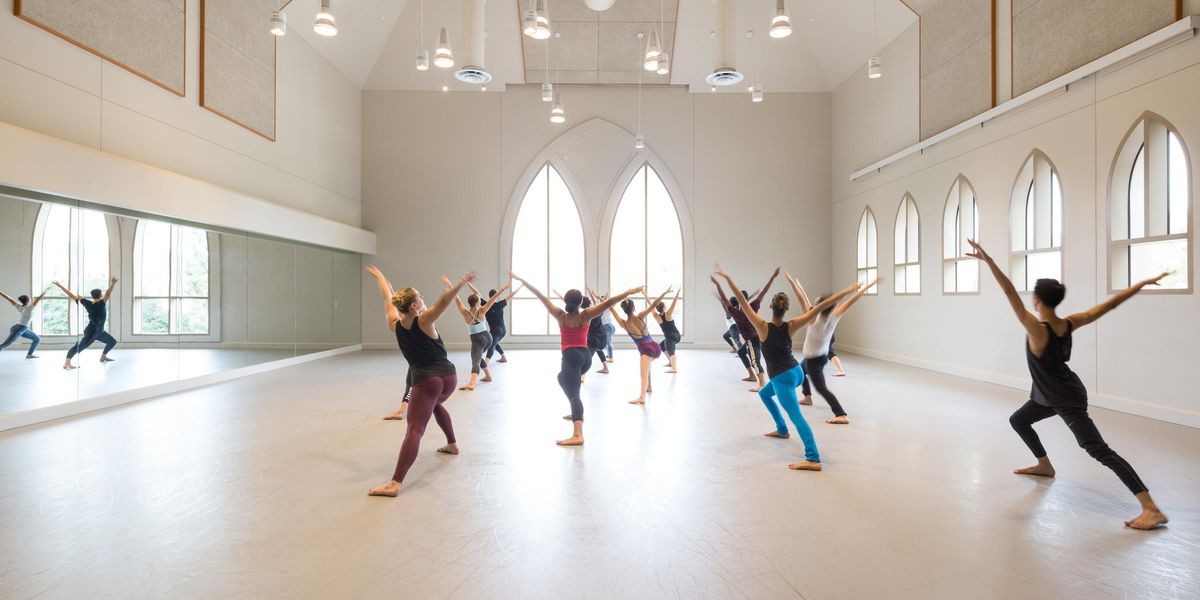Mind Your Body
Skinner Releasing Technique is a somatic practice that enhances dance technique and catalyzes healing. Through the use of imagery, voice, language, and music, the SRT teacher guides the participant in a way that leads to a self-propelling process. Developed by dancer/choreographer Joan Skinner in the 1960s, SRT aims to free students of excess tension and expand movement possibilities. It engages the creative process while honing technique. The choreographer Stephanie Skura, who teaches at the Skinner Releasing center in Seattle (see
www.skinnerreleasing.com) and internationally, shares some of her thoughts about both studying and teaching SRT.
Releasing is not about weakness or even softness. Letting go is just the beginning. You let go of habitual holding patterns and ways of thinking in order to let something new happen. Eventually, you release into energy and intensity and can move in any style.
Part of class involves “deep states.” Participants lie on the floor and are given a checklist of awarenesses. Brain waves slow down, and we go just below conscious level. The teacher gives an image, for example, “legs trailing from high in the solar plexus, like long willowy ferns.” Then the students allow the image to move them. Some may begin with visualizing movement; others might move minimally, while still others move in large energetic ways.
Spoken images can touch us, just as surely as hands can touch us—and change us. One of my favorite images is that the breath transforms into a white mist, spiraling and curling along our bones. It’s an extraordinary image to get at fluidity.
A key principle is that we’re all born with natural grace and optimal alignment. As life sets in, we start holding and warping. When we let go of hunched shoulders, locked knees, or hyperextended backs, we begin to get back to our primal state of grace.
One of the revolutionary ideas is that you do not have one center. There are many centers. You balance by expanding in all directions rather than by holding. You align with the forces of the universe, rather than strictly in relation to your own body. Before SRT, I’d studied many styles of modern dance and ballet, but I always felt I was faking my balance. With multidirectional expansion, I balance in earnest anytime, anywhere, without even warming up.
Another amazing thing I noticed when I starting taking SRT classes: Whether moving very little or dancing madly, afterwards I felt energized rather than exhausted. I asked Joan Skinner about this. “I like to think of energy as not just inside the individual—me in my own little vacuum,” she said. “If I’m thinking that I have to manufacture this energy and store it up, then I have to replace it somehow. But I’m thinking of having my channels open to the energy that is all around us.” So, according to Joan’s thinking, instead of depleting my energy, I was picking up energy.
Dancers study SRT for many reasons. Mark Robison, who danced with Elizabeth Streb, said he could never have done those extreme daredevil moves had he not been releasing. A student who had been in a car accident said she moved without pain only after a session of SRT. Johanna Bergfelt of Toronto Dance Theatre said she learned to trust her body.
While taking my first Skinner Releasing class, I was in tears, grieving because my partner had just moved 3,000 miles away. It seemed OK to feel this even while participating in the class work, and afterwards I felt purged and whole. I was grateful not to have to leave my inner life behind. Now when I teach, I’m aware of how vulnerable people are in class, how the atmosphere is so intimate, and we’re so close to ourselves that someone might start crying at any moment.
Physically people find themselves doing far more than they thought they could. An athlete who’d had knee surgery said he wasn’t going to do the “deep squat.” I suggested he either watch or just go as far as was comfortable. While helping another student, I turned to see him in a full deep squat, looking surprised. A Mark Morris dancer with a hip injury was anxious about weight-bearing. I said she could lie on the floor the whole class. Later, I saw her standing on one leg with the other extended high in the air, balanced, assured, astonished.




